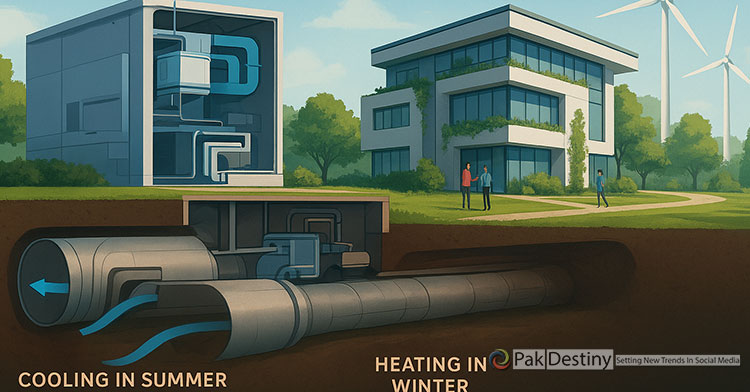
By Fayyaz Butt
The Earth Air Tunnel (EAT) system represents an innovative and cost-effective solution for sustainable heating, ventilation, and air conditioning (HVAC). By utilizing underground tunnels, typically installed at depths of 6 to 10 feet, the system harnesses the earth’s stable sub-surface temperature to regulate indoor air quality and thermal comfort.
System Functionality
In an EAT system, ambient air is drawn into the tunnel through fans and passes underground, where it undergoes natural thermal exchange. During summer, the relatively cooler soil temperature lowers the air temperature, while in winter, the warmer sub-surface helps increase it. This conditioned air is then distributed indoors, providing an energy-efficient means of maintaining comfort levels.
Air filtration units can be integrated into the system to minimize particulate matter (PM) and other airborne pollutants, thereby ensuring cleaner and healthier indoor air.
Key Benefits
Energy Conservation: By reducing reliance on conventional cooling and heating systems, the EAT system lowers electricity demand and operational costs.
Enhanced Indoor Air Quality: Incorporating filtration ensures the delivery of purified air, reducing health risks associated with poor air quality.
Health and Psychological Well-being: Air enriched with oxygen and negative ions (O₂⁻) has been shown to reduce stress, improve sleep quality, and promote relaxation. Negative ions can also be generated artificially to enhance these benefits further.
Environmental Sustainability: The system leverages renewable, natural processes, aligning with global objectives of reducing carbon emissions and promoting green building practices.
The Earth Air Tunnel system exemplifies the synergy between natural resources and technological innovation. As a sustainable alternative to conventional HVAC, it not only reduces energy consumption but also fosters healthier indoor environments. Its adoption could play a pivotal role in advancing eco-friendly building solutions and ensuring a more sustainable future for urban living.
